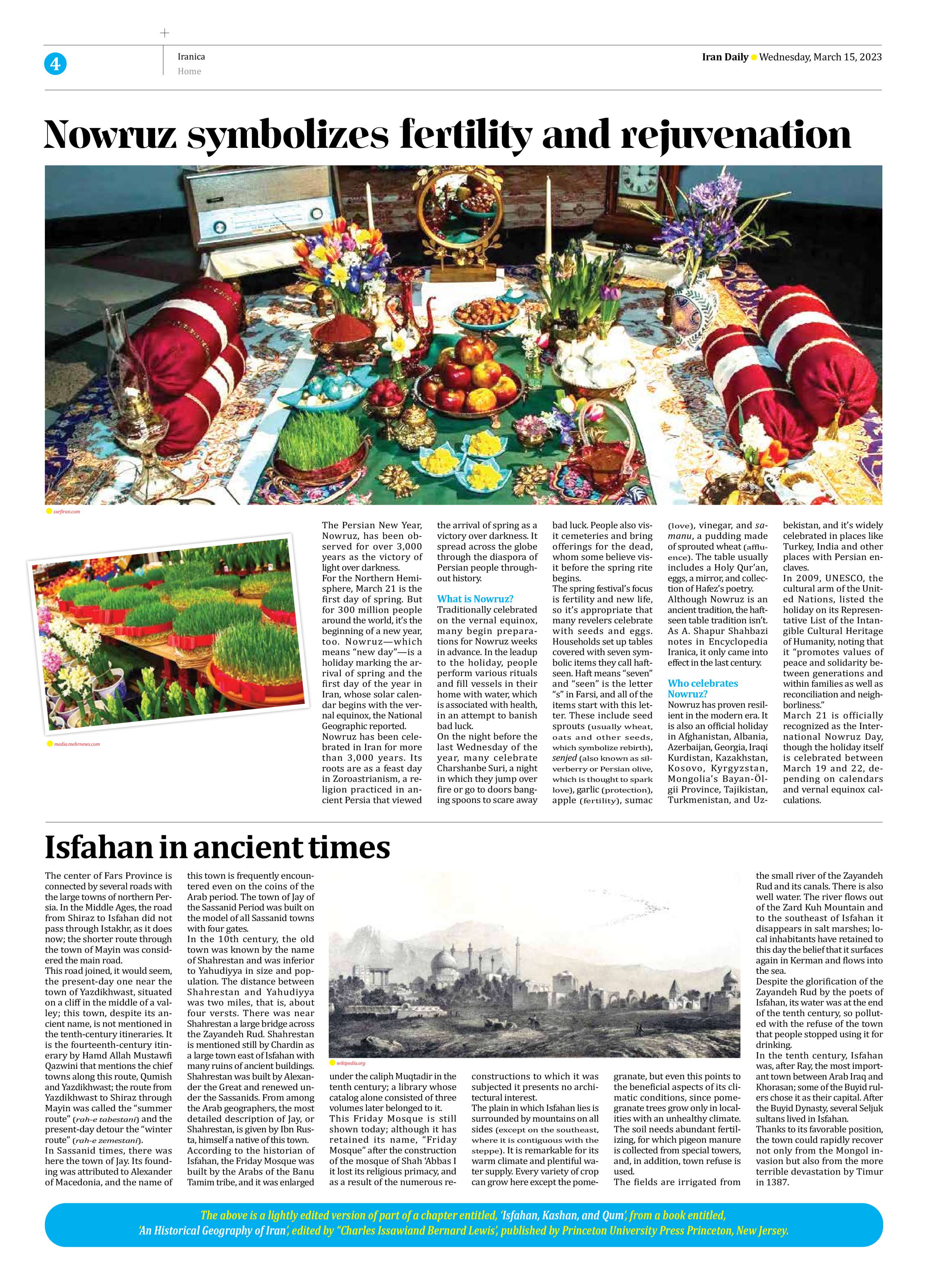
Nowruz symbolizes fertility and rejuvenation
The Persian New Year, Nowruz, has been observed for over 3,000 years as the victory of light over darkness.
For the Northern Hemisphere, March 21 is the first day of spring. But for 300 million people around the world, it’s the beginning of a new year, too. Nowruz—which means “new day”—is a holiday marking the arrival of spring and the first day of the year in Iran, whose solar calendar begins with the vernal equinox, the National Geographic reported.
Nowruz has been celebrated in Iran for more than 3,000 years. Its roots are as a feast day in Zoroastrianism, a religion practiced in ancient Persia that viewed the arrival of spring as a victory over darkness. It spread across the globe through the diaspora of Persian people throughout history.
What is Nowruz?
Traditionally celebrated on the vernal equinox, many begin preparations for Nowruz weeks in advance. In the leadup to the holiday, people perform various rituals and fill vessels in their home with water, which is associated with health, in an attempt to banish bad luck.
On the night before the last Wednesday of the year, many celebrate Charshanbe Suri, a night in which they jump over fire or go to doors banging spoons to scare away bad luck. People also visit cemeteries and bring offerings for the dead, whom some believe visit before the spring rite begins.
The spring festival’s focus is fertility and new life, so it’s appropriate that many revelers celebrate with seeds and eggs. Households set up tables covered with seven symbolic items they call haft-seen. Haft means “seven” and “seen” is the letter “s” in Farsi, and all of the items start with this letter. These include seed sprouts (usually wheat, oats and other seeds, which symbolize rebirth), senjed (also known as silverberry or Persian olive, which is thought to spark love), garlic (protection), apple (fertility), sumac (love), vinegar, and samanu, a pudding made of sprouted wheat (affluence). The table usually includes a Holy Qur’an, eggs, a mirror, and collection of Hafez’s poetry.
Although Nowruz is an ancient tradition, the haft-seen table tradition isn’t. As A. Shapur Shahbazi notes in Encyclopedia Iranica, it only came into effect in the last century.
Who celebrates Nowruz?
Nowruz has proven resilient in the modern era. It is also an official holiday in Afghanistan, Albania, Azerbaijan, Georgia, Iraqi Kurdistan, Kazakhstan, Kosovo, Kyrgyzstan, Mongolia’s Bayan-Ölgii Province, Tajikistan, Turkmenistan, and Uzbekistan, and it’s widely celebrated in places like Turkey, India and other places with Persian enclaves.
In 2009, UNESCO, the cultural arm of the United Nations, listed the holiday on its Representative List of the Intangible Cultural Heritage of Humanity, noting that it “promotes values of peace and solidarity between generations and within families as well as reconciliation and neighborliness.”
March 21 is officially recognized as the International Nowruz Day, though the holiday itself is celebrated between March 19 and 22, depending on calendars and vernal equinox calculations.







